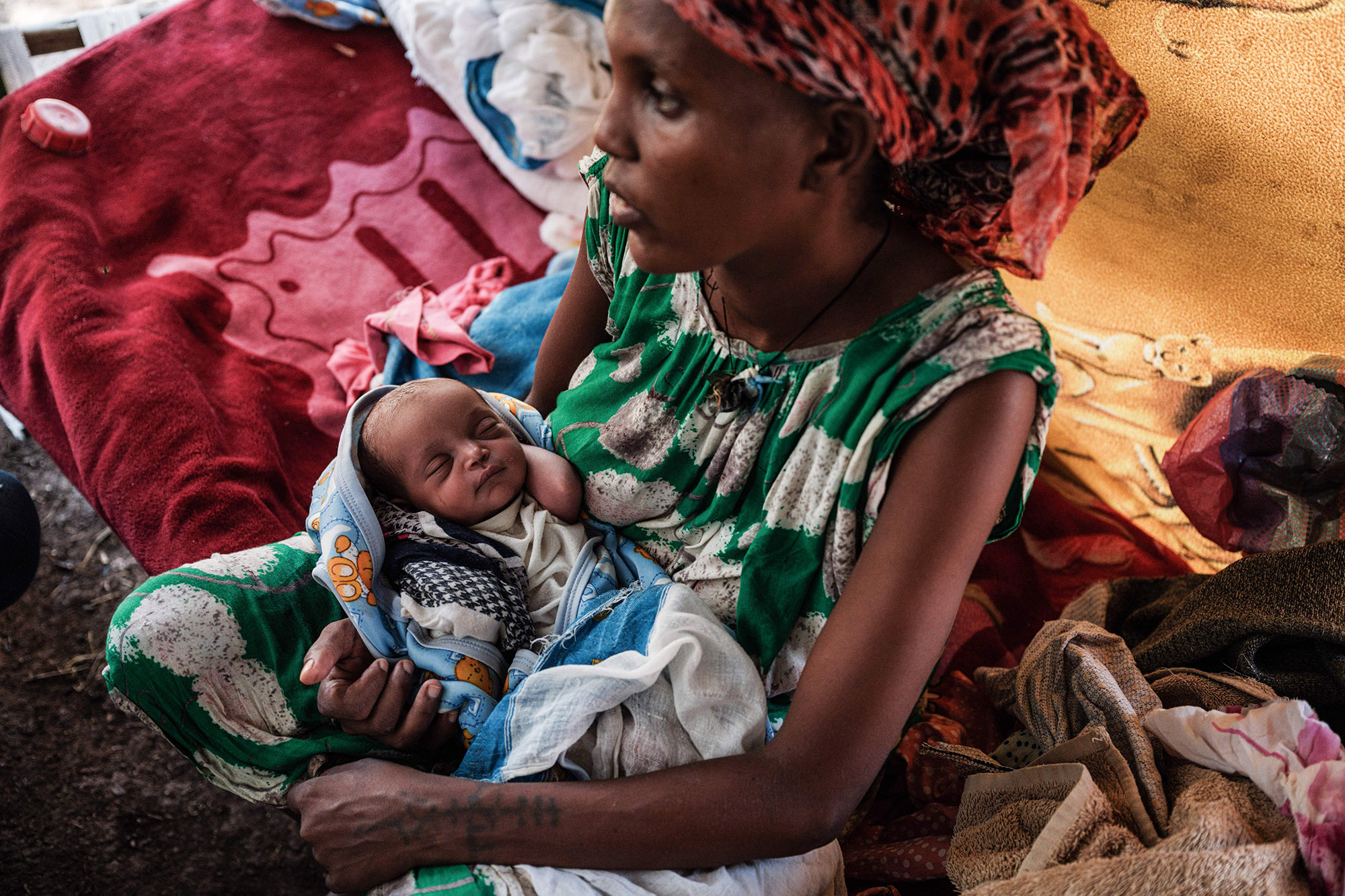UNICEF says over 9 million children out of school in Ethiopia
More than nine million children are out of school across Ethiopia due to man-made and natural disasters, the United Nations Children's Fund (UNICEF) has disclosed.
At least 125 people have already starved to death, trapped in one of the most inaccessible areas of Ethiopia’s conflict-torn Tigray region.

Ethiopian refugee Aster Gebremechael (R), 34, who fled the Ethiopia's Tigray conflict holds her 5-days-old new born daughter in a makeshift tent at the Border Reception Centre in Hamdayit, eastern Sudan, on December 4, 2020. -
The plea arrived from a remote area that had so far produced only rumors and residents fleeing for their lives. Help us, the letter said, stamped and signed by a local official. At least 125 people have already starved to death.
Trapped in one of the most inaccessible areas of Ethiopia’s conflict-torn Tigray region, beyond the reach of aid, people “are falling like leaves,” the official said.
Advertisement
The letter gives a rare insight into the most urgent unknown of the war between Ethiopian forces backed by Eritrea and Tigray’s former leaders: What’s the fate of hundreds of thousands of people cut off from the world for months?
Advertisement
As the United States warns that up to 900,000 people in Tigray face famine conditions in the world’s worst hunger crisis in a decade, little is known about vast areas of Tigray that have been under the control of combatants from all sides since November. With blocked roads and ongoing fighting, humanitarian groups have been left without access.
A possible opening emerged this week when Ethiopia’s government announced an immediate, unilateral cease-fire after Tigray fighters re-entered the regional capital and government soldiers fled. An official for the United States Agency for International Development told U.S. lawmakers on Tuesday that some aid groups were expected to test the cease-fire immediately in an effort to reach remote areas.
However, it isn’t clear whether other parties in the conflict, including troops from neighboring Eritrea accused of some of the war’s worst atrocities, will respect the cease-fire.
The letter that reached the regional capital, Mekele, this month from the cut-off central district of Mai Kinetal was just the second plea of its kind, the health official who confirmed it said. The first had been a message from Ofla district reporting 150 deaths from starvation, which the United Nations humanitarian chief shared in a closed-door session of the U.N. Security Council in April, bringing an angry response from Ethiopia’s government.
But the letter from Mai Kinetal is different, the health official said, offering badly needed, well-compiled data that lay out the devastation line by line: At least 440 people have died, and at least 558 have been victims of sexual violence. More than 5,000 homes have been looted. Thousands of livestock have been taken. Tons of crops have been burned.
Advertisement